| Black Panthers:
Previewing the Game Part
By Mike Bennighof, Ph.D.
August 2021
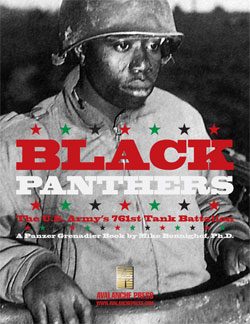 It’s a very white space, the wargame world. While Panzer Grenadier: Black Panthers tells the story of segregated African-American units that fought in World War II, it’s also the story of White America. Because very few of the men in those units wished to be kept apart from the rest of American society; white people put them there, to keep other white people comfortable. It’s a very white space, the wargame world. While Panzer Grenadier: Black Panthers tells the story of segregated African-American units that fought in World War II, it’s also the story of White America. Because very few of the men in those units wished to be kept apart from the rest of American society; white people put them there, to keep other white people comfortable.
Keeping white people comfortable remains the objective for a number of actors in American society some 80 years later. I don’t really believe that the folks who ejected Avalanche Press from American game distribution after we solicited this book are racist themselves; they just don’t want to make potential customers potentially uncomfortable, which merely makes them spineless and contemptible.
But we didn’t publish Black Panthers just to inject some needed discomfort into the world of wargames. After all, its full name is Panzer Grenadier: Black Panthers, and that’s because it’s an expansion book for our Panzer Grenadier: Elsenborn Ridge game. Elsenborn Ridge is based on the American defense and counter-attack in the northern sector of the Battle of the Bulge. It’s our oldest Panzer Grenadier game still in print, and by far the best-selling title in the series. That’s because it’s a very solid game, with great art and a fine set of scenarios.
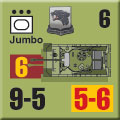 Black Panthers draws on Elsenborn Ridge for a lot: the mapboards, German pieces and many American pieces. And the game rules, too. While Black Panthers includes pieces of its own, those all represent the tanks of the three African-American-manned battalions (the 758th, 784th and of course the titular 761st). You can’t play Black Panthers by itself; you’re going to need Elsenborn Ridge. Fortunately, we’re selling them together for a combined package price. Black Panthers draws on Elsenborn Ridge for a lot: the mapboards, German pieces and many American pieces. And the game rules, too. While Black Panthers includes pieces of its own, those all represent the tanks of the three African-American-manned battalions (the 758th, 784th and of course the titular 761st). You can’t play Black Panthers by itself; you’re going to need Elsenborn Ridge. Fortunately, we’re selling them together for a combined package price.
The scenarios are organized like those in our recent Panzer Grenadier games, in chapters attached to the historical background of the highlighted unit. Taken together, the scenarios follow the battalion’s combat narrative, and then there’s what we call a “battle game” that links the scenarios together if you care to play them all. This makes the scenarios part of the story, not just some game stuff tacked on to the end (likewise, it makes the background more than just some history stuff shoehorned in next to them). They’re an integrated whole, making Black Panthers (like most other Panzer Grenadier games) an actual work of history as well as a game.
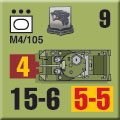 Like the other separate tank battalions, the segregated tank battalions usually fought in company strength (or even by the platoon), parceled out among the infantry regiments and battalions of the divisions to which they were attached. U.S. Army doctrine said that enemy tanks were to be fought by tank destroyers, not American tanks. The natural prey of an American tank was to be enemy infantry. Like the other separate tank battalions, the segregated tank battalions usually fought in company strength (or even by the platoon), parceled out among the infantry regiments and battalions of the divisions to which they were attached. U.S. Army doctrine said that enemy tanks were to be fought by tank destroyers, not American tanks. The natural prey of an American tank was to be enemy infantry.
The tables of organization provided for two types of tank battalions, organized identically. Tank battalions served in armored divisions; separate tank battalions (sometimes called GHQ tank battalions) served as infantry (including airborne) support and sometimes augmented armored divisions, too.
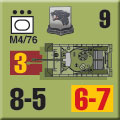 The tank battalion had four tank companies: three medium tank companies, each with 17 Shermans, and one light tank company with 17 M5 light tanks. The battalion also had a platoon of Sherman assault guns equipped with 105mm howitzers, as well as a mortar platoon. Late in the war additional Shermans were issued as a “reserve company” and some far more capable M24 Chaffee light tanks were received by both the 761st and 784th Tank Battalions. The tank battalion had four tank companies: three medium tank companies, each with 17 Shermans, and one light tank company with 17 M5 light tanks. The battalion also had a platoon of Sherman assault guns equipped with 105mm howitzers, as well as a mortar platoon. Late in the war additional Shermans were issued as a “reserve company” and some far more capable M24 Chaffee light tanks were received by both the 761st and 784th Tank Battalions.
That doctrine makes for scenarios that involve tank-infantry task forces doing the things that tank-infantry task forces do, which usually means assaulting German infantry-based forces. This late in the war the Germans have adjusted their own forces; even as their overall quality has seen an abrupt decline as their veteran core has been killed or accepted a fully-paid vacation in Canada or Alabama, they’ve lavished the remainder (including the proverbial old men and boys) with anti-tank weaponry including lots and lots of Panzerfaust rocket-propelled grenades.
 Most of the scenarios are on the small side; the sweeping tank battles are elsewhere in the series (where the armored divisions come out to play). By rejecting Army Ground Forces commander Leslie McNair’s vision of an African-American armored division, the U.S. Army assured that Black and white soldiers would have to fight side-by-side once the Black tank battalions went into action. And the Black battalions fought very well, in particular the two outfits (the 761st and 784th) attached to white divisions. Even Orval Faubus, who would go on to become governor of Arkansas and oversee the shameful attempt to keep Black children out of Little Rock’s all-white schools, had nothing but praise for the 784th’s Black tankers when he served as an intelligence officer in the 35th “Santa Fe” Infantry Division. Most of the scenarios are on the small side; the sweeping tank battles are elsewhere in the series (where the armored divisions come out to play). By rejecting Army Ground Forces commander Leslie McNair’s vision of an African-American armored division, the U.S. Army assured that Black and white soldiers would have to fight side-by-side once the Black tank battalions went into action. And the Black battalions fought very well, in particular the two outfits (the 761st and 784th) attached to white divisions. Even Orval Faubus, who would go on to become governor of Arkansas and oversee the shameful attempt to keep Black children out of Little Rock’s all-white schools, had nothing but praise for the 784th’s Black tankers when he served as an intelligence officer in the 35th “Santa Fe” Infantry Division.
The nature of those battles is that of grinding, close-quarters combat, emphasizing combined arms cooperation. That’s also the essence of the Panzer Grenadier game system (that’s why the Grenadier part is right there in the series title), so the battles fought by these battalions provided the perfect background for Panzer Grenadier scenarios.
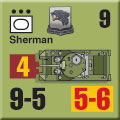 Most of the scenarios in the Black Panthers set feature the two battalions that served on the Western front alongside white divisions. The 758th Tank Battalion remained a light tank outfit, attached to the African-American 92nd Infantry Division in Italy. The 92nd did not have a very good war, thanks in large part to its spectacularly incompetent commander, Edward “Sic ’em Ned” Almond. They often fought against die-hard Italian Fascists, who of course aren’t included in Elsenborn Ridge (and have yet to appear at all in the Panzer Grenadier series), and in terrain very different from the wooded hills of the Ardennes. But the 761st and 784th provided plenty of action. Most of the scenarios in the Black Panthers set feature the two battalions that served on the Western front alongside white divisions. The 758th Tank Battalion remained a light tank outfit, attached to the African-American 92nd Infantry Division in Italy. The 92nd did not have a very good war, thanks in large part to its spectacularly incompetent commander, Edward “Sic ’em Ned” Almond. They often fought against die-hard Italian Fascists, who of course aren’t included in Elsenborn Ridge (and have yet to appear at all in the Panzer Grenadier series), and in terrain very different from the wooded hills of the Ardennes. But the 761st and 784th provided plenty of action.
We’re going to pay a price for having published this book, for years to come (though frankly, it’s miniscule compared to that exacted from many creators of color, even today). Getting ejected from distribution was no minor thing, but we’ll survive. I’m proud that we were able to bring this story forward, and I’d absolutely do it again. Black Panthers tells a story that needs telling, that needs re-telling, and it delivers an excellent game-playing experience while it does so. That’s no mean feat.
You can order Black Panthers right here.
Black Panther Package
Elsenborn Ridge
Black Panthers
Retail Price: $109.98
Package Price: $90
Gold Club Price: $72
You can experience the Black Panther Package right here.
Sign up for our newsletter right here. Your info will never be sold or transferred; we'll just use it to update you on new games and new offers.
Mike Bennighof is president of Avalanche Press and holds a doctorate in history from Emory University. A Fulbright Scholar and NASA Journalist in Space finalist, he has published an unknowable number of books, games and articles on historical subjects.
He lives in Birmingham, Alabama with his wife and three children. He will never forget his dog, Leopold.
Want to keep Daily Content free of third-party ads? You can send us some love (and cash) through this link right here. |
